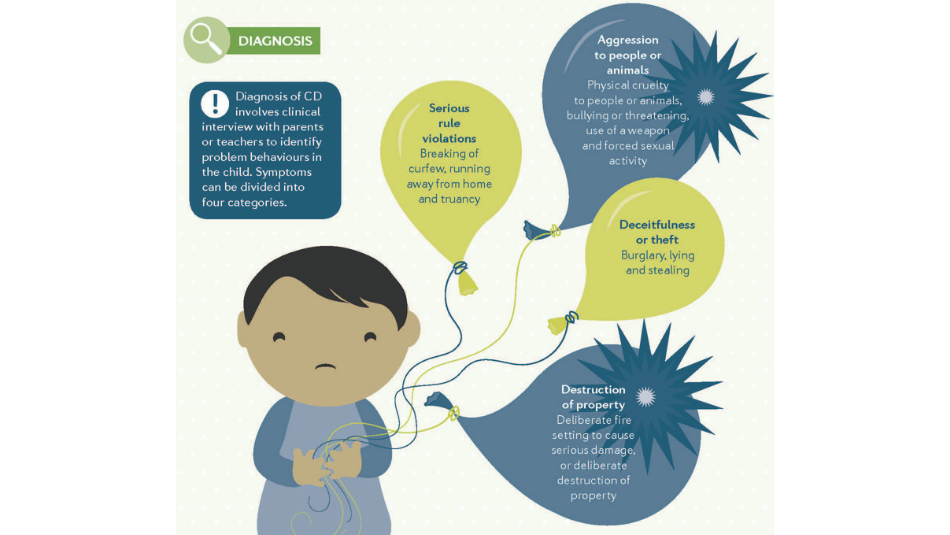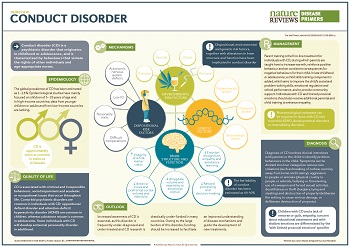
New Nature Reviews article argues much more must be done to improve diagnosis and treatment for children with behavior problems
Much greater awareness, improved diagnosis and enhanced treatment are all required in order to reduce the burden on children and society stemming from the severe behavioral condition conduct disorder (CD), according to a new expert review.
 Close to 3 percent of school-aged children suffer from CD, a highly impairing psychiatric disorder that is characterized by severe antisocial and aggressive behavior, including physical aggression, theft, property damage and violation of others’ rights.
Close to 3 percent of school-aged children suffer from CD, a highly impairing psychiatric disorder that is characterized by severe antisocial and aggressive behavior, including physical aggression, theft, property damage and violation of others’ rights.
In an article published today in Nature Reviews, Candice L. Odgers, professor of psychological science, and colleagues from other universities in the United States, Australia, Europe and United Kingdom detail the underlying causes, course and evidence-based treatment of CD. The international team traces the early origins of the disorder and highlight opportunities for prevention and intervention.
Missed opportunities to detect and treat CD in children and adolescents led the researchers to write the new Nature Reviews paper, which calls for a greater awareness of the condition and more funding to improve understanding and ability to treat the disorder.
The Nature Reviews article points to evidence showing that conduct disorder is associated with an exceptionally high individual, societal and economic burden. The health and personal burden is seven times greater than that of attention deficit/hyperactivity disorder (ADHD), a widely known disorder.
While it is likely that children diagnosed with ADHD may also show signs of conduct disorder, very few are diagnosed or receive treatment for it. Conduct disorder also is associated with a greater health burden than autism, according to the researchers.
The paper — a comprehensive overview of all aspects of conduct disorder, its diagnosis, clinical management and long-term impact — highlights the negative consequences and adult outcomes that can occur if it is not correctly diagnosed or treated. In particular, it reveals the high physical and mental health burden on patients and their families.
 In children, CD is associated with a higher risk of developing ADHD, oppositional defiant disorder and developmental language disorders; while for teenagers, comorbidities can include depression, anxiety and alcohol and substance abuse. Up to 50 percent of individuals with the disorder develop antisocial or borderline personality disorder in adulthood, along with more serious criminal behaviour and gang involvement, according to the article.
In children, CD is associated with a higher risk of developing ADHD, oppositional defiant disorder and developmental language disorders; while for teenagers, comorbidities can include depression, anxiety and alcohol and substance abuse. Up to 50 percent of individuals with the disorder develop antisocial or borderline personality disorder in adulthood, along with more serious criminal behaviour and gang involvement, according to the article.
The review highlights previous findings from one of the longest running studies of psychiatric disorders in the world, where Professor Odgers and her Ph.D. student Joshua Rivenbark tallied the high societal costs of conduct disorder for children, their families and society by linking electronic health, crime and service utilization records. Children exhibiting persistent conduct problems across childhood and adolescence comprised only 9 percent of the population but accounted for more than 50 percent of criminal convictions.
The review also finds that young people with conduct disorder are more likely to have children earlier, with more unplanned pregnancies, to become dependent on benefits, to be homeless or even to attempt suicide. In addition, those with conduct disorder display parenting problems which often mean that their children are at higher risk for developing the disorder.
However, the researchers suggest that with the correct diagnosis, management for the condition is possible. Their study highlights the value of training parents in better supporting children with conduct disorder, and skills training for children and adolescents with the condition to help them improve their social and problem-solving skills and ability to regulate their emotions. Combined, the authors suggest, these approaches can have profound impacts on children’s well-being and life chances.
“Early and substantial investments in preventing and treating conduct disorder are needed and could lead to long-term cost savings and improved quality of life for thousands of children suffering from the disorder in the U.S. alone,” Odgers says. “Conduct disorder is often undetected and untreated among children, despite the fact that targeted and effective treatments exist. Increased awareness of the disorder and earlier investments are needed — for the health of both children and society.”